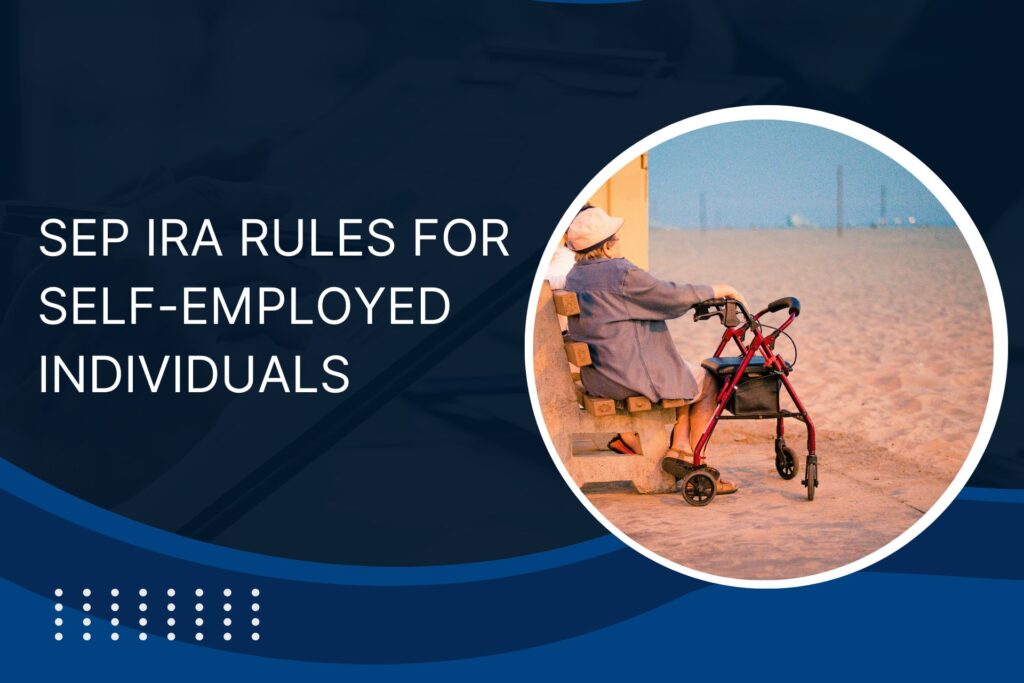Understanding the Basics of SEP IRA Rules for Self-Employed Individuals
SEP IRA, or Simplified Employee Pension Individual Retirement Arrangement, is a retirement plan tailored for self-employed individuals or small business owners. SEP IRA Rules for Self-Employed Individuals provide a straightforward, tax-advantaged way to save for retirement, with unique advantages and rules compared to other retirement plans. These rules are specifically designed to accommodate the variable income and unique financial circumstances of self-employed individuals.
Eligibility Criteria for SEP IRA
To be eligible for a SEP IRA, you must meet certain criteria:
- Self-Employed Status: You must be self-employed, either as a sole proprietor, freelancer, independent contractor, or small business owner with one or more employees.
- Income Thresholds: SEP IRAs have generous contribution limits, allowing you to contribute up to a certain percentage of your income, which is determined by the IRS annually.
Contribution Limits and Calculations
Contributions to a SEP IRA are made solely by the employer, not the employee. As of 2024, the contribution limit is the lesser of 25% of an employee’s compensation or $61,000. However, contributions for self-employed individuals are calculated differently.
- Calculation Method: Self-employed individuals calculate their maximum contribution by taking their net earnings from self-employment and applying the same percentage used for employees. This can be complex, but it generally allows for significant contributions.
Flexibility in Contributions
One of the key advantages of a SEP IRA is its flexibility in contributions.
- Variable Contributions: Unlike other retirement plans, SEP IRAs allow you to adjust your contributions each year based on your income and financial situation. This makes it an excellent choice for those with fluctuating incomes or unpredictable cash flow.
Tax Benefits of SEP IRA
SEP IRAs offer several tax benefits that make them attractive to self-employed individuals:
- Tax-Deductible Contributions: Contributions made to a SEP IRA are tax-deductible, reducing your taxable income for the year in which they are made.
- Tax-Deferred Growth: Just like other retirement accounts, investments within a SEP IRA grow tax-deferred, allowing your money to compound without being subject to annual taxes on gains.
- Tax-Advantaged Withdrawals: While withdrawals from a SEP IRA are taxed as ordinary income, they are typically made during retirement when your income is lower, potentially resulting in a lower tax rate.
SEP IRA Withdrawal Rules
Withdrawals from a SEP IRA follow similar rules to traditional IRAs:
- Minimum Distribution Age: You must start taking required minimum distributions (RMDs) from your SEP IRA by April 1st of the year following the year you turn 72, or 70 ½ if you reached 70 ½ before January 1, 2020.
- Early Withdrawal Penalties: Withdrawals made before the age of 59 ½ are generally subject to a 10% early withdrawal penalty, in addition to ordinary income tax.
Want to Know More about SEP IRA?
Click here to Schedule a Free Consultation Today!
Considerations for Self-Employed Individuals
While SEP IRAs offer many benefits, there are some considerations to keep in mind:
- Sole Proprietorship vs. Incorporated Business: The rules for contributing to a SEP IRA may vary depending on your business structure. Sole proprietors have different calculations compared to incorporated businesses.
- Employee Eligibility: If you have employees, you must contribute to their SEP IRAs as well, following the same percentage rules. This can be a significant expense for businesses with multiple employees.
Conclusion
In conclusion, SEP IRA Rules for Self-Employed Individuals offer self-employed individuals and small business owners a powerful tool for saving for retirement. With generous contribution limits, tax advantages, and flexibility, they are worth considering as part of your overall retirement strategy.


